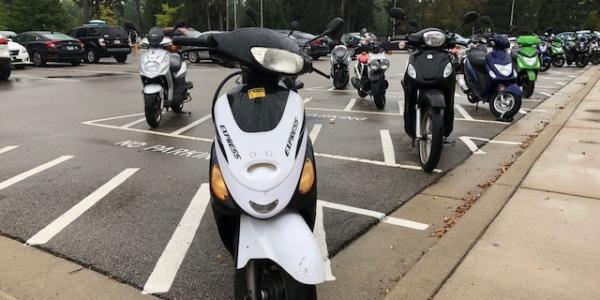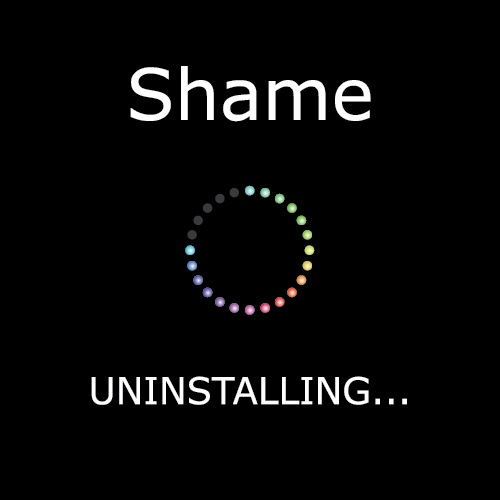Accessing Creativity to Increase Work Effectiveness

Letting your processing mind rest can actually enhance the quality of your work.
Recently I have been reading Dr. Emma Seppälä’s book The Happiness Track: How to Apply the Science of Happiness to Accelerate Your Success. I have been particularly enjoying Chapter 4 which is titled: Get More Done by Doing More of Nothing.
While I have come to believe the truth of this call to idleness, there was a time that I would have outright rejected this idea. I thought that a quiet mind was a lazy mind, and if I wasn’t “processing” I was procrastinating. I thought the way to solve a problem was to focus on the problem and concentrate until I figured it out. I valued analytical thinking and dismissed reflection as a waste of time, a frivolous activity I could only enjoy once the real work was done. To be fair, I did not learn to pledge allegiance to my processing brain all by myself. I got a little bit of help from Western Culture.
When I was a young child I was a creative master, making up stories and games without even trying. I could spend hours making up new games with old toys, or playing house, or putting on a show in our backyard. Imagination and creativity came naturally to me like it does for the vast majority of children. Seppälä states “If we all have the ability to be creative masters as children, our creative genius must be innate. So where did it go? Our education buried it.”
If I look to my own experience I would have to say this is true. In early elementary school I was taught that the thinking skills most valued by society were the critical thinking skills – linear, processing, analytical thought, logic. As we grow up through the educational system these are the skills that are focused on, lifted up, and measured. Our primary, innate mode of thinking – the receiving and reflection mode that is open, creative, curious, and wondering gets relegated to the backseat of our learning, isolated into art class and drama club. So, it comes as no surprise that many studies show that adults overuse their processing mode of thinking to the detriment of their creativity. This has negative effects on innovation, creative problem solving, adaptability, resilience, and confidence. It also has negative effects on our mental health, as over processing contributes to worry, anxiety, and ruminating on the past trying to figure out what went wrong.
In her book, Seppälä shares several related studies including one by George Land author of Grow or Die which showed that while creativity is naturally present at a young age, we unlearn it through our education system. As reported by Seppälä, Land found the percentages of “divergent thinking geniuses” (a.k.a creative geniuses) in specific age ranges as follows:
• 98% of those between the ages of 3-5 years of age
• 32% of those between the ages of 8-10 years of age
• 10% of those between the ages of 15-18
• 2% of those age 25
Drawing from the data you could conclude that no more than 10% of the current American workforce functions with high levels of creativity, and yet we need creativity to solve the practical problems we encounter during our daily work flow. The good news is the research also demonstrates that we never lose our creativity like we think we do, we just stop accessing it. Once we realize that it is innate, helpful, powerful, and a key to success we may be more inclined to practice what Seppälä calls “creative idleness” as an intentional way of increasing our creative capacity. She offers three practical ways to access more creativity: learning to unfocus through diversification, making time for stillness and silence, and inviting fun back into our lives.
Learning to unfocus through diversification
According to Seppälä, “Experts suggest that the key to being idle or to unfocusing is to diversify our activities rather than being constantly focused on a single task. To get a new perspective on something, we actually need to disengage from it. We can diversify in two ways: through mindless tasks or through a broader set of experiences.”
A recent non-scientific study I conducted on my 19-year-old son would indicate that Seppälä is correct. I went to Ann Arbor to take the child out for dinner. He had been working so hard and not eating well so I decided it was time for a mama intervention.
When I arrived, he was so focused on a math problem that had been alluding him for quite some time that he told me he did not think he could go out to dinner with me after all. I vetoed this suggestion to cancel our time together as I had just drove an hour to connect with and feed him. He begrudgingly agreed to go and we went right across the street to grab some Thai take out. He ate quickly and was not present with me or his food. I interrupted his thought processing several times, but he would quickly go back to processing mode. I told him he would be more likely to find the answer to his math problem if he gave it a rest and allowed himself to be fully present with me and his food.
After dinner, I made him go to a bakery with me and get some coffee. He agreed, but I could tell he was still feeling pressured and being hard on himself for not being able to “figure it out” on command. Now he was over-processing and being self-critical. His chances of finding, or better yet seeing the answer, were dropping by the minute.
I told him I would not leave town until he mindfully ate the shortbread cookie shaped like Michigan’s lower peninsula that I had bought him as a bribe to spend a few more moments with me. I was being very dramatic (a.k.a goofy) as I asked him to tell me what he thought about the cookie. Did it remind him of childhood? Was it as good as mine, or better? He became very engaged with the cookie and soon we were laughing and reminiscing about his childhood and my passion for baking. We had a few moments of good connection. I thanked him for letting me steal him away from his studies for a while and then hopped in my truck to head back home.
Before hitting the highway, I stopped for gas and before I even left the gas station I got an excited text from him that said “Mom, I got it!” When I talked to him he explained that no sooner had he walked back into his house and sat down at the computer when he saw the simple mistake he was making, and quickly got the correct answer. Before I got back to East Lansing he had completed his entire set of math problems. Seems dinner with mom was the best kind of distraction.
Making time for stillness and silence
Seppälä offers, “Given how busy modern life is, we can think of stillness as another diversifying experience. Rather than being in motion and rushing from one place to the next, we are still. Rather than doing something, we do nothing. Rather than focusing on things, we completely unplug. Meditation is an obvious example of cultivating stillness or silence.”
My greatest teacher of this work effectiveness skill is my partner Karen. For years she has told me that she does her best work walking around a lake or floating around said lake in her kayak. If she is working on writing an article or proposal she makes sure to build in time for stillness and silence. She contends she is not procrastinating but rather percolating. When she describes her process to me it typically includes gathering data and doing some prep work, then switching to a mindless task or going for a walk and just being, during which she often has insights come to her about what she is working on. She then returns to her “desk” and refocuses on the project, refining and improving her work. She has been grateful when her employers have allowed her the flexibility to work in ways that best supports her creativity, productivity, performance, and wellbeing.
It turns out there is scientific support for this work methodology. Seppälä shares the work of Scott Barry Kaufman author of Ungifted and Wired to Create who offers a model for work effectiveness that includes specific stages of mastery, inspiration, and refinement which are all present in the example above. This is why it is vital to frame activities like talking walks, sitting in the sun, and noticing nature as essential work activities.
Seppälä offers, “Given how busy modern life is, we can think of stillness as another diversifying experience. Rather than being in motion and rushing from one place to the next, we are still. Rather than doing something, we do nothing. Rather than focusing on things, we completely unplug. Meditation is an obvious example of cultivating stillness or silence.”
Inviting fun back into our lives
Seppälä points out that “submerged in the responsibilities of life, the seriousness of affairs, and an ever-growing to-do list, we often forget to play, feel we don’t have time for it, or somehow believe it is no longer appropriate.” To be our most creative, we must fight against the magnetic pull of work and let ourselves play. This is particularly true when we are really stuck and feel blocked or when we know we are not producing our best work. Play has been proven to increase positive emotions, increase creativity, and help people regain a sense of perspective.
When I was the mom of 3 little kids, the invitation to play was always open to me. Often, I would feel like I didn’t have time for it, and sometimes I would disappoint one of them with the answer “not right now honey, maybe later.” What I learned, however, is every time I decided to go for it, to set the work aside and get into a good game of catch in the street, have an all-out tickle fest, or play a game of Mario party, I would always come back to the work more refreshed. It was always easier to focus after having fun, and on some occasions it even saves me money as these reset moments prevent me from breaking things in a moment of frustration.
Here is a list of tips for increasing creative idleness in your day to day life. If you are interested in exploring these ideas further and meet our program eligibility, feel free to make an appointment with an MSU Employee Assistance Counselor by contacting eap@msu.edu .
Photo by Jeff Isaak on Unsplash
Related Articles

“There’s Always a Moped”
Use what can be easily found in your environment to help you relax.

What’s up with your Inner Supervisor?
Having a harsh and critical "inner supervisor" can make it harder for you to be your best self both at home and at work.

Conserving your Emotional Currency
Being mindful of how you spend your emotional energy can help you protect your physical and emotional health.

What Matters Most at the Holidays?
Breaking your rules about how things “have to be done” for the holidays is the best gift you can give yourself and the people you love.





